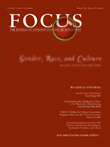Quick Reference for Substance-Related Disorders
Substance abuse interview
Need to determine:
Progression
Impaired control
Preoccupation with use
Adverse life consequences
Denial
Ask about the following:
Alcoholism
Screening Interview for Diagnosis of Alcoholism
Alcoholic drinking patterns
Detection of drugs in blood and urine
The drug screen
Screening for drugs of abuse
Drug Abuse Survey
Drug Abuse Survey with confirmation
Interventions
Efficacious behavioral and psychotherapeutic interventions
Efficacious pharmacotherapies
Promising pharmacotherapies
Information & Authors
Information
Published In
History
Authors
Metrics & Citations
Metrics
Citations
Export Citations
If you have the appropriate software installed, you can download article citation data to the citation manager of your choice. Simply select your manager software from the list below and click Download.
For more information or tips please see 'Downloading to a citation manager' in the Help menu.
View Options
View options
PDF/EPUB
View PDF/EPUBGet Access
Login options
Already a subscriber? Access your subscription through your login credentials or your institution for full access to this article.
Personal login Institutional Login Open Athens loginNot a subscriber?
PsychiatryOnline subscription options offer access to the DSM-5-TR® library, books, journals, CME, and patient resources. This all-in-one virtual library provides psychiatrists and mental health professionals with key resources for diagnosis, treatment, research, and professional development.
Need more help? PsychiatryOnline Customer Service may be reached by emailing [email protected] or by calling 800-368-5777 (in the U.S.) or 703-907-7322 (outside the U.S.).

